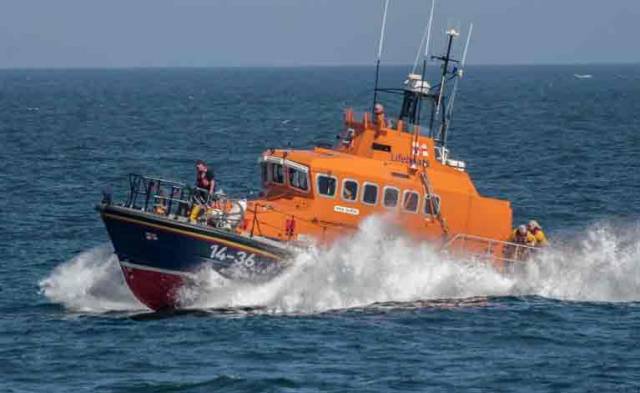The volunteer lifeboat crew of Donaghadee RNLI were paged yesterday (2 July) at 1.51pm by Belfast Coastguard after reports that a 27ft yacht with two people onboard had run aground at the entrance to Ballywalter Harbour and was rapidly taking on water.
A local boat had made initial attempts to tow the yacht off the rocks but was unsuccessful.
The all-weather lifeboat Saxon under Coxswain Philip McNamara and five crew members onboard launched immediately and made full speed in slightly choppy conditions with a north easterly onshore wind force 2–3.
The lifeboat crew were on scene at 2.20pm and after assessing the situation, a decision was made to launch the Trent class lifeboat’s smaller inflatable daughter boat in order to access the area and remove the casualties and attach a towline to the stricken vessel.
A seven-year-old boy was assisted onboard the daughter boat by the volunteer crew members and taken to the safety on the lifeboat. The crew then returned to the yacht to secure a towline to the bow, as the yacht was deemed to be taking on too much water very quickly. The grandfather was then also moved to the safety of the lifeboat.
The yacht was towed into Ballywalter Harbour and a salvage water pump put onboard to try and reduce the water levels. However, this wasn’t effective due to the speed the water was being taken on. A local fishing boat proceeded to tow the boat further into the harbour where it could dry out and be assessed for damage.
The casualties were passed into the care of the Coastguard rescue team.
Speaking following the call out Donaghadee RNLI Coxswain Philip McNamara said: ‘Thankfully we were able to make it on time to assist this yacht and more importantly the people onboard, before the situation deteriorated any further. It is easy to underestimate how quickly a boat can take on water and leave the crew in a dangerous situation. We cannot stress enough the importance of requesting help at the earliest opportunity should you find yourself in difficulties of any kind while at sea. The Coastguard can be contacted via a VHF or from a mobile by dialling 999 or 112 and asking for the Coastguard.’































































